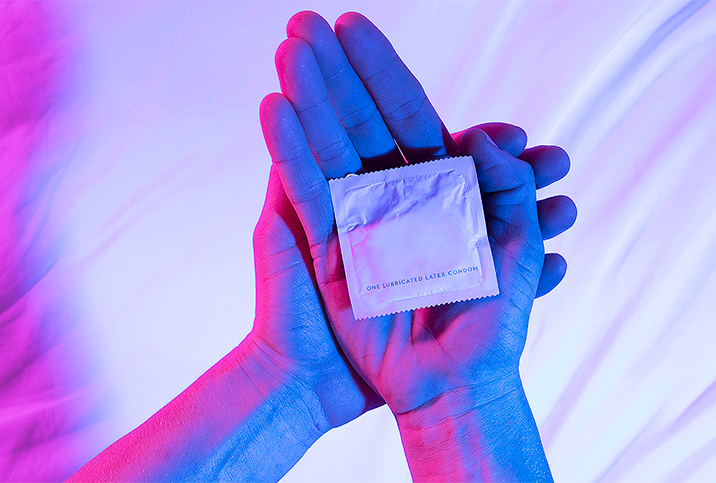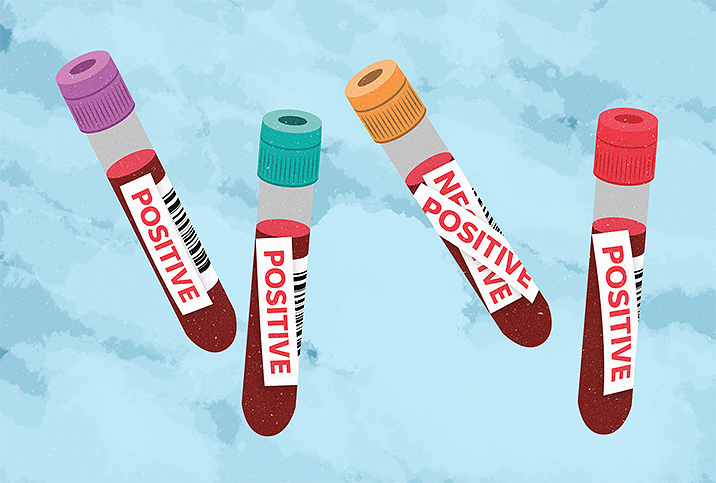Preventing STDs/STIs

You've heard all the umbrella terms: venereal disease (VD), sexually transmitted diseases (STDs) and sexually transmitted infections (STIs). All refer to viral, bacterial or parasitic infections primarily spread through sexual contact and activity.
While abstinence from sexual activity is the only method to completely protect yourself from STDs, this rigidity isn't realistic for most people. Even monogamous couples aren't completely safe, given one or both partners could have a dormant condition such as human papillomavirus (HPV) they were unaware of. A lifetime of safe sex—and good health—comes from education about how STDs are spread and how to avoid them.
STDs and STIs
STDs primarily spread through an activity involving the mouth, vagina, penis and/or anus. STDs are serious and require treatment to protect yourself and your partner(s). Some are easily treatable with a course of antibiotics. Others can lead to lifelong chronic conditions, including damage to your vision, heart or reproductive system. Some infections lead to infertility or weakened immune systems and in some cases, death. It is possible to pass some infections in utero to a woman's unborn baby, too.
Causes
STDs can be viral, bacterial or parasitic.
Bacterial STDs include chlamydia, gonorrhea and syphilis. Although some bacterial infections go away on their own, it's best to treat every bacterial STD with antibiotics. Regular trips to the doctor can heal and prevent the spread of the diseases.
STDs caused by viruses include HIV, herpes, HPV and hepatitis B. Treatment of viral STDs is more complicated than a prescription from your doctor. Viruses aren't eliminated with antibiotics, but medication can reduce the symptoms or slow the progression of the outbreak. With proper use and monitoring, the spread of these infections can be controlled.
Trichomoniasis is one of the most common STDs caused by a parasite, in this case, a tiny, single-celled organism called trichomonas, whose only host is humans. Lice and scabies are other examples of parasitic STIs. All can be treated with medication.
Spread
Sexual activity and contact is the most common way to transmit STDs, including the exchange of bodily fluids, such as semen, vaginal fluids or blood. These exchanges are most likely through vaginal, oral or anal sexual activities. It is possible, though less likely, to transmit STDs without intercourse—through different types of erotic touching, including foreplay and manual stimulation of the genitalia.
STDs can be transmitted through nonsexual means as well, such as blood transfusions or risky behavior such as sharing needles for drug use. It is believed the trichomonas parasite can be passed through contact with objects such as towels, razors, toothbrushes or toilet seats, though such instances seem very rare, and there is little documentation.
HIV, chlamydia, syphilis and hepatitis B can be passed from mother to child during pregnancy, birth or breastfeeding. These infections can lead to premature birth, low birth rates and other serious conditions.
Keeping Safe
Communication
If there is one item you should take away concerning STDs, it is to always communicate with your partner or partners about sexual boundaries, sexual history and past and current infections.
With new partners, have "the talk" ahead of time before engaging in vaginal or anal sex. Ask questions such as when they were last tested for STDs, what they're comfortable with, how many other partners have they had and if they have had infections or symptoms in the past. Communicate expectations of condom and dental dam use.
Limit the use of alcohol and refrain from drug use when sexual behavior is a possibility. Alcohol and drugs can lower inhibitions and lead to risky decisions.
Practicing monogamy or having only one long-term sexual partner could help protect you from STDs. As long as each partner remains monogamous and neither enters into the relations with an infection, avoiding STDs is possible. Keep in mind, however, many STDs don't have noticeable symptoms and can remain undetected for a long time—even years, in the case of chlamydia, HPV and HIV. The only way to be sure about your status is to get tested.
Testing
Regular testing for STDs is one of the most important steps to maintaining your health and the health of your future partner or partners. You should discuss your sexual history and practices with your doctor or another healthcare provider often, especially if your circumstances change—for example, if you change partners, have more than one sexual partner or engage in more risky behaviors such as intravenous drug use.
The Centers for Disease Control and Prevention (CDC) recommends the following guidelines for STD testing:
- Everyone between the ages of 13 and 64 should be tested for HIV, at least once in their lives.
- Women younger than 25 years of age who are sexually active should get annual tests for gonorrhea and chlamydia.
- Pregnant women should be tested for multiple STDs, as recommended by their doctor. If potential exposure continues during pregnancy, testing should be ongoing.
- Gay and bisexual sexually active men should be tested for STDs yearly.
- People with multiple or anonymous partners should be tested more frequently, perhaps every 3-6 months.
- If you engage in unprotected sex or share syringes or needles with other drug users, you should be tested a minimum of once a year, preferably more often.
Types of tests
Screening tests differ for the various STDs, and it helps to know what to expect. Here are some of the common types of tests:
Chlamydia and gonorrhea can be tested with a urine sample or a scraping from inside the penis or from the cervix.
HIV, syphilis and hepatitis are tested via blood sample. Or if you are presenting genital sores, then a sample may be collected directly from the sores.
People infected with any of the strains of the herpes virus may have difficulty being tested. The CDC does not recommend tests for people who have no symptoms, and many cases of both herpes simplex virus type 1 (HSV-1) and type 2 (HSV-2) are asymptomatic. In cases where there's been a change in behavior (such as changing sexual partners or not using condoms), a blood test might be possible. Keep in mind many of these tests give false positives, which additionally makes understanding the spread more difficult.
HPV tests are available only to women and typically are included as part of an annual Pap test, which is where a scraping of the cervix is taken to look for abnormal cells. Unfortunately, there is no HPV test for men at this time, although they can be infected with HPV and pass the virus to sexual partners.
There are at-home STD test kits available as well. These generally involve either a urine test or a swab sent into a lab for analysis. While the convenience and privacy are a plus, these tests tend to bring back a higher-than-average rate of false-positive results.
Protecting Yourself
Barrier methods of protection during sex don't eliminate the risk of STDs but help minimize it.
Oral or dental dams are thin latex, or polyurethane, sheets placed over the vagina or anus to prevent the spread of infection during oral sex. If you don't have a dental dam handy, you can use a male condom. Carefully open the package, cut off the tip and the bottom of the condom, then cut it open lengthwise. Use the flattened latex condom over the vaginal or anal opening.
It's important to use a condom properly, each time you have sex. This includes when you switch from one type of sex to another, such as from oral to vaginal sex. Or anal to vaginal. However, keep in mind you can still be exposed to some infections, including herpes and HPV, even when using a condom, through skin-to-skin contact.
Make sure to use condoms throughout the entire sexual act. Learn the proper method for putting on and removing a condom. Consider using a female condom, which is inserted into the vagina and can significantly reduce exposure to STDs. Both male and female condoms require the same precautions, namely that you check the condom for tears or defects, and never reuse a condom. Put on a fresh condom for each sex act, using water-based or silicone lube, since oil-based products can weaken the condom.
Two other safeguards are worth mentioning:
- Vaccines are now available to prevent hepatitis B and HPV. The CDC and many pediatricians recommend administering the HPV vaccine to preteens before they become sexually active.
- Evidence suggests a circumcised male penis can decrease the spread of genital herpes and HPV. It is also suggested the spread of HIV from a female partner to a circumcised male is less likely than to an uncircumcised male.
Proper protection is crucial in all sexual encounters, but remember first and foremost, mature, trusting communication with your sexual partner is the best way to prevent the spread of STDs.


















